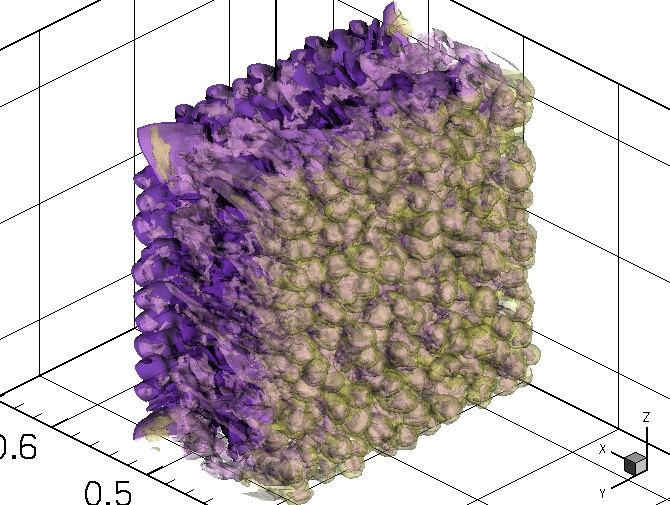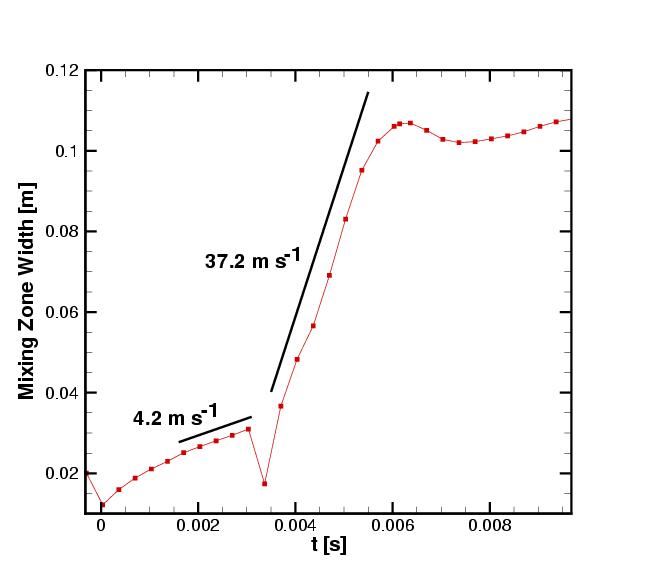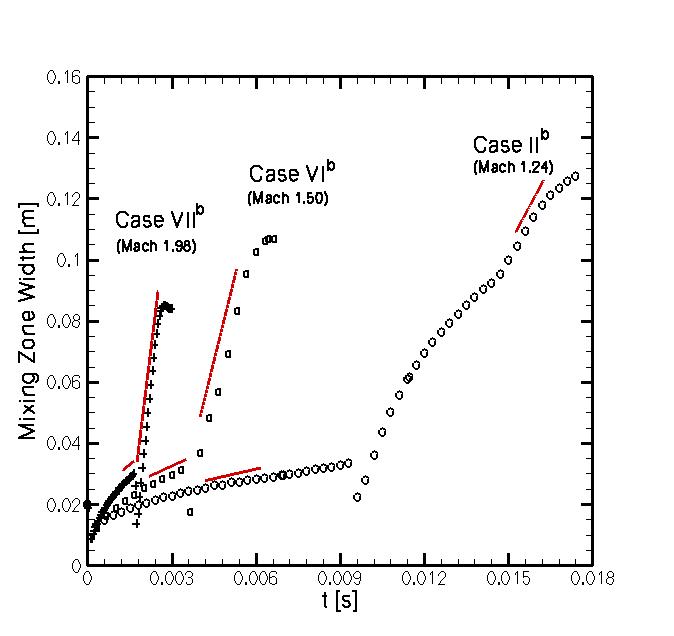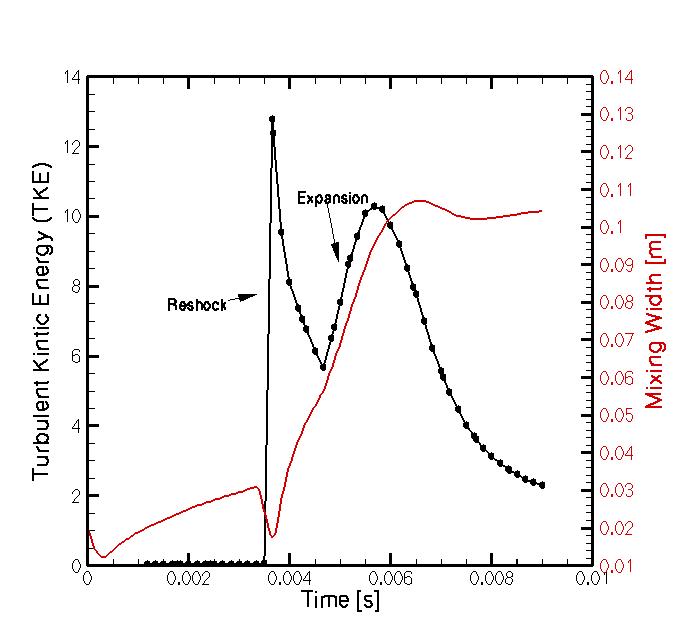Start of topic | Skip to actions
The basic features of the Richtmyer-Meshkov Instability (RMI) can be seen in this single-mode 2D example.
Our validation focuses on the 3D mutlimode, fully turbulent version of this flow.
Vetter and Sturtevant's paper "Experiments on the shock-excited interfacial instability at an air/SF6 interface"
From the Proceedings of the 20th International Symposium on Shock Waves (p.593-598) forms the basis of comparison
for some of our RMI simulations. This brief summary
outlines the basics of the experiments, and this wave diagram helps
display some of the features of gas dynamics.
The RMI mixing zone at a snapshot in time (about t=5ms after intial shock, 1.5ms after reshock) and mixing width
as a function of time, also avaliable is the spectra shown just prior
to reshock till much later (3ms to 8.3ms):



 Computational performance: Breakdown of computational time in AMR algorithm at different physical times
Computational performance: Breakdown of computational time in AMR algorithm at different physical times
Imbalance denotes the maximal imbalance in the portion of the numerical update, i.e. the WENO-TCD-LES scheme, due to inappropriate partioning of the AMR hierarchy.



 Computational performance: Breakdown of computational time in AMR algorithm at different physical times
Computational performance: Breakdown of computational time in AMR algorithm at different physical times
| Task | 2ms (%) | 5ms (%) | 10ms (%) |
|---|---|---|---|
| WENO-TCD-LES | 45.3 | 65.9 | 52.0 |
| Boundary Sync. | 44.3 | 28.6 | 41.9 |
| Flux correction | 7.2 | 3.4 | 4.1 |
| Interpolation | 0.9 | 0.4 | 0.3 |
| Reorganization | 1.6 | 1.2 | 1.2 |
| Misc. | 0.6 | 0.5 | 0.5 |
| Imbalance | 1.25 | 1.23 | 1.30 |